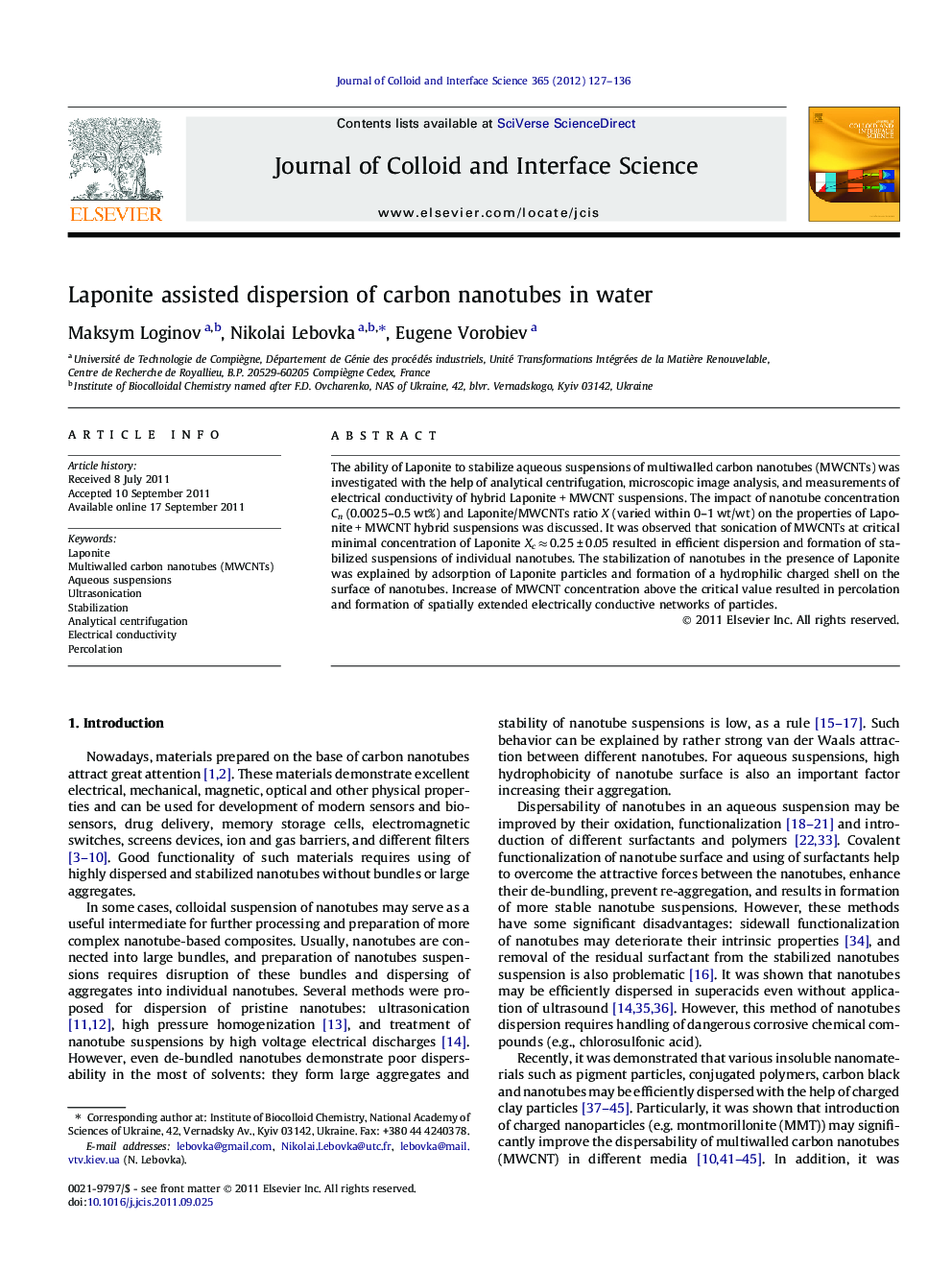| Article ID | Journal | Published Year | Pages | File Type |
|---|---|---|---|---|
| 608459 | Journal of Colloid and Interface Science | 2012 | 10 Pages |
The ability of Laponite to stabilize aqueous suspensions of multiwalled carbon nanotubes (MWCNTs) was investigated with the help of analytical centrifugation, microscopic image analysis, and measurements of electrical conductivity of hybrid Laponite + MWCNT suspensions. The impact of nanotube concentration Cn (0.0025–0.5 wt%) and Laponite/MWCNTs ratio X (varied within 0–1 wt/wt) on the properties of Laponite + MWCNT hybrid suspensions was discussed. It was observed that sonication of MWCNTs at critical minimal concentration of Laponite Xc ≈ 0.25 ± 0.05 resulted in efficient dispersion and formation of stabilized suspensions of individual nanotubes. The stabilization of nanotubes in the presence of Laponite was explained by adsorption of Laponite particles and formation of a hydrophilic charged shell on the surface of nanotubes. Increase of MWCNT concentration above the critical value resulted in percolation and formation of spatially extended electrically conductive networks of particles.
Graphical abstractFigure optionsDownload full-size imageDownload high-quality image (88 K)Download as PowerPoint slideHighlights► Laponite-assisted dispersion of MWCNT results in formation of stable suspension. ► Laponite forms the hydrophilic shells on the surface of hydrophobic MWCNTs. ► Efficient dispersability requires critical Laponite/MWCNT ratio X ≈ 0.25 wt/wt. ► Critical ratio X corresponds to complete coverage of MWCNTs by Laponite. ► Stabilized MWCNTs form percolation networks above 0.058 wt%.
